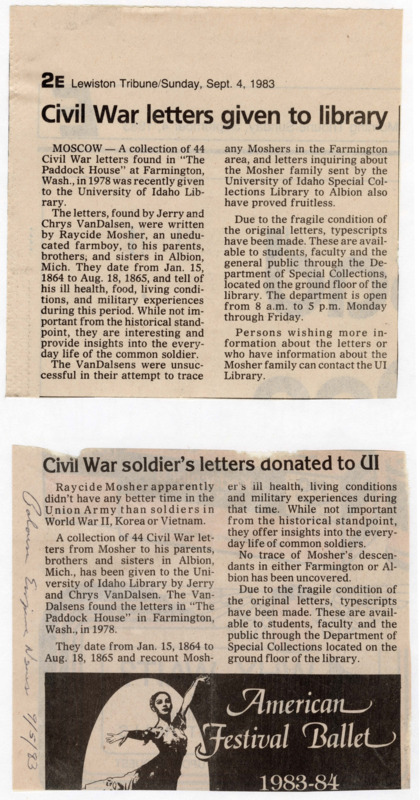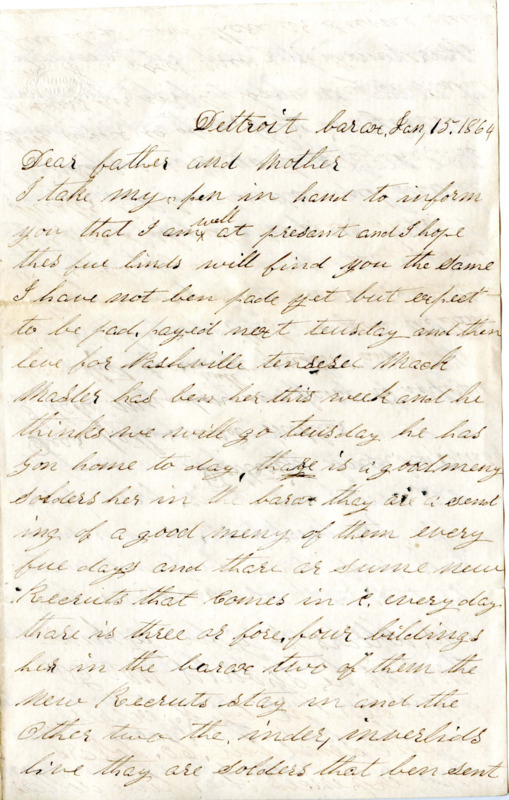The University of Idaho Library presents a new digital collection, the Raycide Mosher Civil War Letters, which features the digitized correspondence of a Union soldier, Raycide Mosher, between January 15, 1864, and August 18, 1865. This digital collection seeks to make the The Raycide Mosher Civil War Letters collection, held by Special Collections & Archives, more accessible by providing images of the letters with accompanying transcripts.
In 1978, Jerry and Chrys VanDalsen discovered Raycide Mosher’s Civil War letters in the “Paddock House” in Farmington, Washington. It is unclear how the letters made their way from Michigan to Eastern Washington, although many Civil War veterans and their families traveled west after the war, in part due to settlement incentives provided by the federal government.1 The VanDalsens donated the letters to the University of Idaho Library in 1983.
Raycide Mosher (1839-1891) served with Company A of the 1st Michigan Engineers and Mechanics Regiment during the American Civil War. On December 14, 1863, at the age of 24, he enlisted as a private with the Union Army at Clarence, Michigan; he joined Company A of the 1st Michigan Engineers on January 6, 1864.2
As Mosher describes in his letters, Company A departed Michigan in late January 1864, traveling through Tennessee, Alabama, and Georgia, where Mosher participated in General Sherman’s March to the Sea in late 1864. Following the Union Army’s capture of Savannah, Georgia, Mosher’s unit traveled north through the Carolinas to Washington, D.C. To Mosher’s disappointment, his unit was moved back to Tennessee and kept in service for several months after the end of the war in April 1865; he was finally discharged on September 22, 1865.
Raycide Mosher’s letters are a window into the quotidian elements of service in the Union Army during the later phases of the Civil War. Mosher’s attention is trained largely on illness, food, pay, the layout of camps and hospitals, and family affairs back home. Well-known patterns and events associated with the Civil War, such as high rates of death by illness and Sherman’s March to the Sea, are illustrated through Mosher’s observations and experiences.
This digital collection resulted from collaboration between the University of Idaho Library’s Special Collections & Archives and the Center for Digital Inquiry and Learning (CDIL).
Want to see our archival collections in person? Please contact Special Collections & Archives at libspec@uidaho.edu
Sources:
-
National Archives and Records Administration, Homestead Act (1862). (Archived: https://perma.cc/T3H4-N2LR) ↩
-
Enderlin, Dean A., Civil War Veterans Buried in Tulocay Cemetery, Napa, California. (Archived: https://perma.cc/XU9U-657G) ↩



